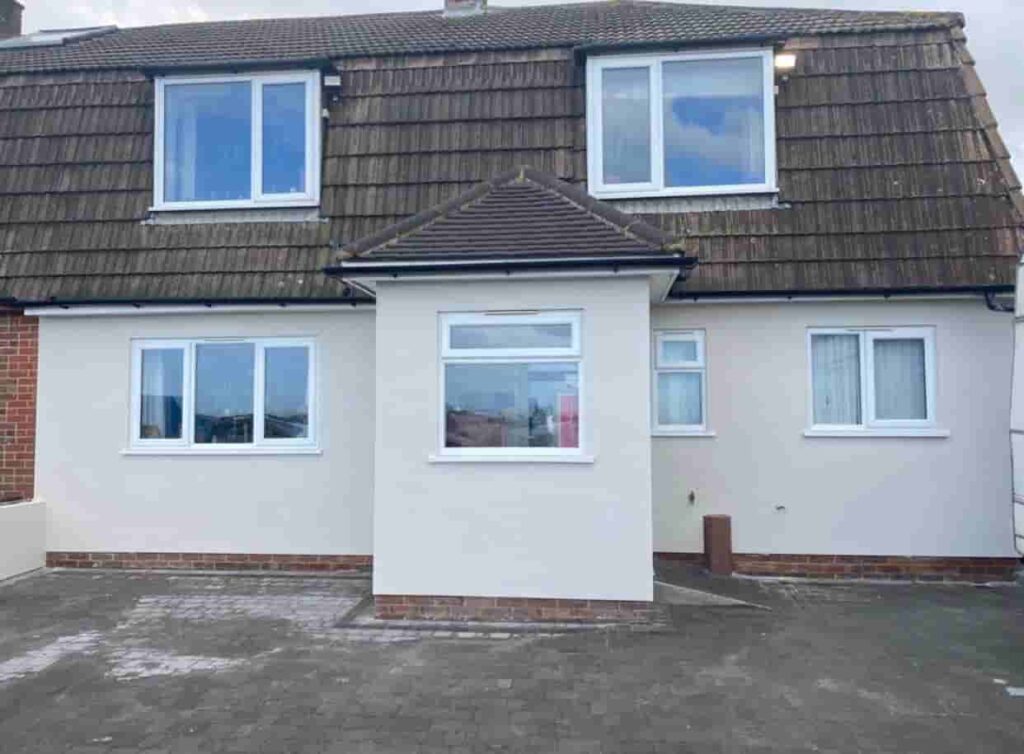When it comes to protecting your home from the elements, the roof is your first line of defence. However, certain areas of the roof are more vulnerable to water penetration, particularly around joints and edges. One of the key components designed to protect these areas is lead flashing. Over time, lead flashing can wear down or become damaged, leaving your roof exposed to potential leaks and water damage. At Saffron Walden Roofing Repairs, we understand the crucial role that lead flashing plays in safeguarding your roof. In this blog, we’ll explain why lead flashing repairs are so important and how they protect the vulnerable edges of your roof.
What is Lead Flashing?
Lead flashing is a thin sheet of metal, usually made from lead, that is installed around roof joints, chimneys, vents, valleys, and other roof intersections. Its purpose is to create a watertight seal, preventing water from seeping through gaps where different parts of the roof meet. Lead is a popular material for flashing due to its malleability, durability, and weather resistance, making it an ideal solution for long-term roof protection.
The Importance of Lead Flashing in Roof Integrity
- Waterproofing Protection
The primary function of lead flashing is to prevent water from entering your home through vulnerable areas on the roof. Without properly installed and maintained flashing, water can seep into the roof’s structure, leading to damp, mould growth, and even structural damage over time. The edges of your roof, chimneys, and valleys are especially susceptible to leaks, and lead flashing provides the critical waterproofing barrier needed to protect these areas.
- Durability in Harsh Weather Conditions
Lead is highly durable and can withstand the harsh weather conditions that roofs are regularly exposed to. Whether it’s heavy rain, snow, or extreme heat, lead flashing maintains its integrity over the years, providing long-term protection. However, like any material, it can degrade over time, especially if exposed to fluctuating temperatures or physical damage. Regular inspections and prompt repairs are essential to ensure that your lead flashing continues to function effectively.
- Preventing Structural Damage
When lead flashing becomes damaged or worn, the roof’s vulnerable edges are exposed to moisture, which can lead to serious structural issues. Water can infiltrate the roof space, causing rot in wooden beams, weakening the roof’s support system, and even damaging ceilings and walls. By addressing any flashing issues early, you can prevent costly damage and extend the life of your roof.
Common Issues with Lead Flashing
While lead flashing is built to last, several factors can cause it to fail, necessitating repairs:
- Weathering and Corrosion Over time, exposure to the elements can cause the lead to corrode or wear down. This is especially true in areas where the flashing is exposed to high levels of rain or snow. Regular inspections can help catch signs of corrosion early, allowing for timely repairs before the problem worsens.
- Improper Installation If lead flashing is not installed correctly, it may not provide the necessary protection. Poor workmanship can lead to gaps, loose flashing, or poorly fitted sections, all of which can compromise the roof’s waterproofing.
- Physical Damage Flashing can become dislodged or damaged by high winds, falling debris, or animals. When this happens, the damaged section must be repaired or replaced as soon as possible to restore the roof’s protection.
- Thermal Expansion Lead flashing naturally expands and contracts with changes in temperature. Over time, this movement can cause cracks or loosen the flashing, leading to leaks. Addressing these issues with regular maintenance helps ensure that the flashing remains secure.
The Importance of Timely Repairs
If you notice any signs of damaged or deteriorating flashing, it’s essential to address the issue immediately. Delaying repairs can result in water damage that may not be visible until it has caused significant problems. Early signs of lead flashing failure include:
- Water stains on ceilings or walls
- Visible gaps between flashing and roofing materials
- Peeling paint or damp spots near chimneys or roof valleys
- Dislodged or warped flashing visible from the ground
At Saffron Walden Roofing Repairs, our experienced team can assess the condition of your lead flashing and recommend the necessary repairs to restore full protection to your roof. By investing in timely repairs, you can avoid more costly problems down the road.
Why Choose Professional Lead Flashing Repairs?
Lead flashing repairs require precision and expertise to ensure proper installation and long-term effectiveness. At Saffron Walden Roofing Repairs, we use high-quality materials and proven techniques to ensure that your flashing is securely installed and provides maximum protection against leaks. Our skilled team can handle all types of lead flashing repairs, from minor fixes to full replacements, ensuring that your roof remains watertight and structurally sound.
Conclusion
Lead flashing plays a critical role in protecting the vulnerable edges of your roof from water damage. Ensuring that your flashing is well-maintained and repaired when needed is essential for the overall integrity of your roof and home. At Saffron Walden Roofing Repairs, we offer professional lead flashing repair services that keep your roof secure, weatherproof, and in optimal condition.
Call us on: 01799 611 596
Click here to find out more about Saffron Walden Roofing Repairs
Click here to complete our contact form and see how we can help with your roofing needs.

